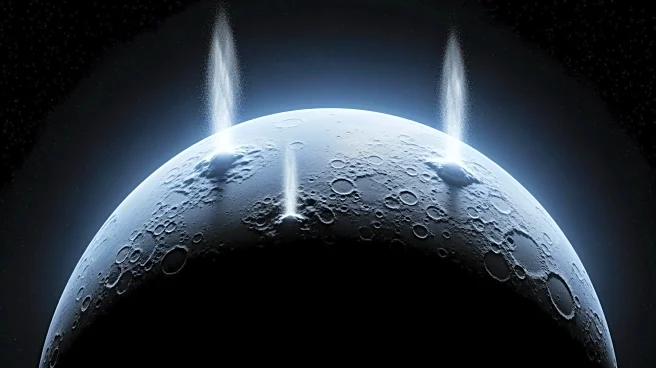What's Happening?
NASA's Perseverance Rover has discovered potential clues to ancient life on Mars through the identification of specific mineral patterns in sedimentary rocks. The rover's instruments, PIXL and SHERLOC,
detected 'leopard spots' on a rock at Cheyava Falls, which are composed of iron-rich minerals vivianite and greigite. These minerals are known to form through electron-transfer reactions, which could indicate microbial life. The discovery is significant as it involves some of the youngest sedimentary rocks studied by the mission, challenging previous assumptions that signs of ancient life would only be found in older formations. This finding suggests Mars may have been habitable for a longer period than previously thought.
Why It's Important?
The discovery by Perseverance could have profound implications for our understanding of Mars' history and its potential to support life. If the minerals were indeed formed by microbial life, it would suggest that Mars was habitable for a longer period, possibly extending the timeline for when life could have existed on the planet. This could reshape scientific theories about the conditions necessary for life and the potential for life beyond Earth. The findings also highlight the importance of continued exploration and study of Mars, as they could provide critical insights into the planet's geological and biological history.
What's Next?
The scientific community will likely engage in further analysis and peer review of the data collected by Perseverance to confirm or refute the biological potential of the findings. NASA has made the data available for further study, which could lead to new missions or experiments aimed at exploring these potential biosignatures in greater detail. The results could also influence future Mars exploration strategies, including the selection of landing sites for upcoming missions and the development of technologies to detect life.
Beyond the Headlines
The discovery raises ethical and philosophical questions about the search for extraterrestrial life and the implications of finding life beyond Earth. It also underscores the importance of rigorous scientific methods and peer review in validating such significant claims. The potential for life on Mars could influence public interest and funding for space exploration, as well as international collaboration in the search for life in the universe.











